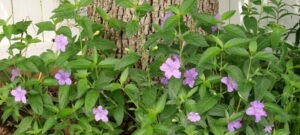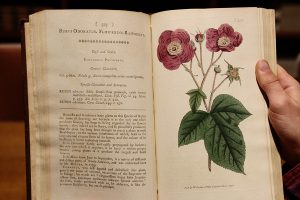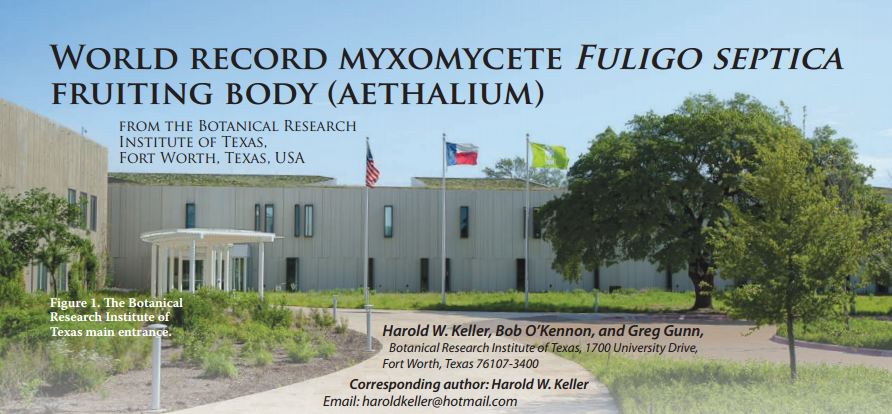
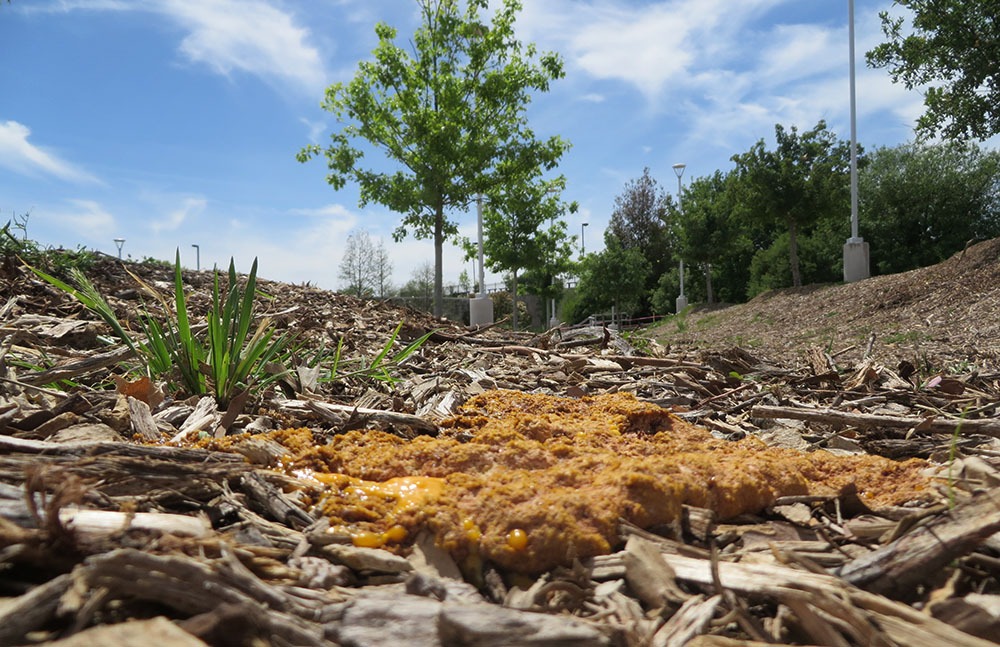
And there it was—a myxomycete fruiting body about 30 inches by 22 inches, round like a pancake and filled with spores, found in BRIT’s front yard growing on bark mulch in bioswale #3. This discovery was recently published in the 2016 Summer Issue (Volume 9, No. 2) of FUNGI magazine, a popular publication for amateurs and professional mycologists (people who study fungi and fungal-like organisms). There were more than 20 smaller fruiting bodies scattered on the surface of the bark mulch, but this fruiting body eclipsed the former world record by several inches.

What is a myxomycete? They are often referred to by mushroom collectors as “slime molds” because of a soft, jelly-like, amorphous stage called a plasmodium that creeps over the surface of bark mulch feeding on microorganisms, mostly bacteria, eventually developing into a fruiting body structure that forms spores. There are animal-like life cycle stages that are motile, tiny amoebae or swimming cells as well as plant-like or fungal like stages with spores. Most of the species have fruiting bodies that are tiny, less than 0.1 of an inch in diameter.
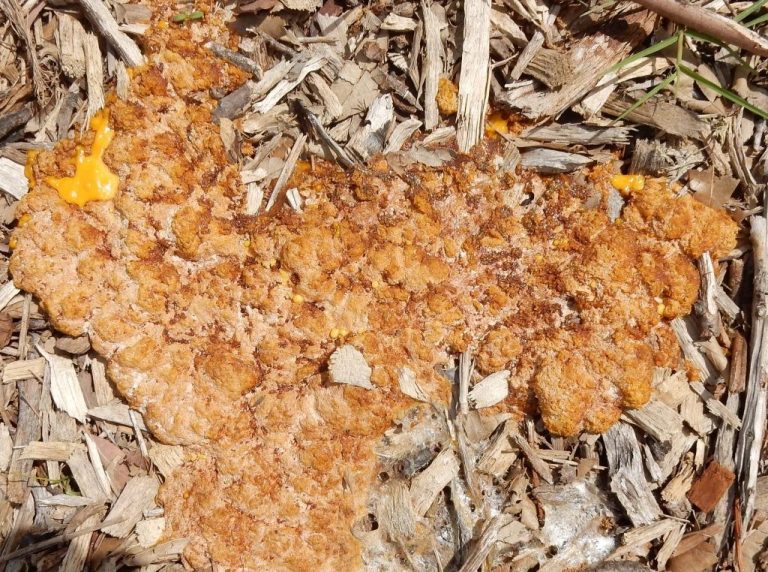
This myxomycete species, Fuligo septica, is common in the Fort Worth area, growing on piles of leaves, compost heaps or piled grass clippings, wood chips, decomposing tree stumps, living grass in yards, and bark mulching around the base of trees. It is not a disease pathogen and poses no problem attacking and killing lawn grass or shrubbery. It is sometimes a scary nuisance as in the case of a Garland, Texas, homeowner that discovered the plasmodial stage growing and getting larger, that was called “the Texas Blob,” portrayed as a mutant bacterium that might take over the earth, and made newspaper headlines throughout the country.
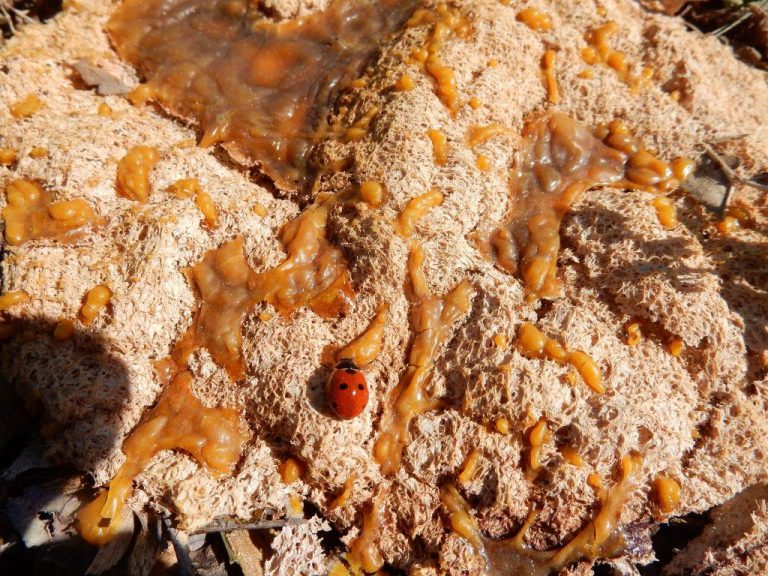
How did this myxomycete get to this site? The spores are wind-blown and probably were already present on the oak bark mulch when it was placed in the bioswale around the trees. This article has weather data compiled from a BRIT weather station that includes the temperatures, precipitation, and the time course of fruiting body formation for the period March 1st to April 15th, 2016.
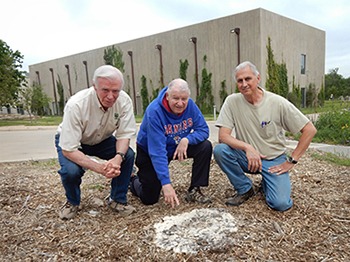

Right: The same specimen two days later, showing more weathering and exposure of black spore mass and breaking up of cortex.
Keller, H.W., B. O’Kennon, and G. Gunn. 2016. World record myxomycete Fuligo septica fruiting body (aethalium). FUNGI 9(2):6-11.



